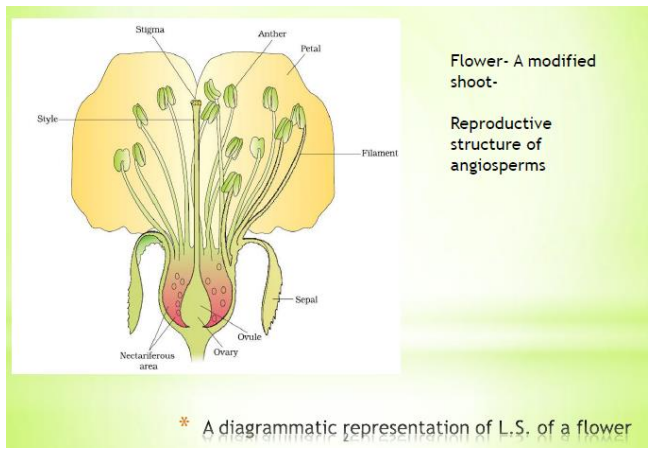SEXUAL REPRODUCTION IN FLOWERING PLANTS || Revision Notes Class 12 Boards || Last Minute Revision Notes
SEXUAL REPRODUCTION IN FLOWERING PLANTS
• Sexual reproduction is the process of development of new organisms from two parents through fusion of male and female gamete.
• The flower is the main structure concerned with reproduction. The reproductive organs or the sporophylls are produced within the flowers.
• The sporophylls are of two types microsporophylls (stamen) and megasporophylls (carpel)
• Carpel is distinguished as ovary bearing ovule, style and stigma.
• Stamen is distinguished as filament, anther and connective
• The whole process of sexual reproduction in flowering plants can be divided into three steps:-
i) Pre-fertilization
ii) Double fertilization
iii) Post-fertilization
PRE-FERTILISATION: STRUCTURE AND EVENTS
The pre-fertilization events can be studied under following points:-
i) Pollen grain formation
ii) Embryo sac formation
iii) Pollination
iv) Pollen pistil interaction
POLLEN GRAIN FORMATION
Male reproductive unit (Stamen)
• A stamen is the male reproductive unit of angiosperms. It consists of an anther and a filament. The anther is bilobed and the lobe encloses four pollen sacs or microsporangia.
• Each pollen sac contains number of pollen grains. The four pollen sacs lie in four corners of a dithecous anther.
• Dithecous anther: An anther that contains two lobes that are joined together by a non-sporangious tissue called as the connective.
• The anther wall is made up of four layers of cells.
• An anther dehisces by slits to liberate pollen grains.
Anther development
• The anther development starts from a mass of homogenous meristematic cells surrounded by an epidermis.
• Four lobes are formed and four layers of archesporial cells are differentiated.
• Archesporial cells: A cell or a group of primitive cells that forms cells from which spores are developed.
• Each archesporial cell divides to form two types of cells: a primary parietal cell and a primary sporogenous cell.
• The parietal cell divides several times to form the anther wall whereas the sporogenous cell undergoes fewer divisions and forms the microspores or pollen mother cells (PMC).
• The innermost layer of cell wall that lies in contact with the PMCs forms the tapetum. The tapetum is significant in pollen development.
• Tapetum: It is a tissue present within the anther that provides nourishment to the growing spores.
• The layer below the epidermis forms the endothecium
Wall layers of anther
• Epidermis – single layer of cells and protective in function.
• Endothecium – Single layered second wall. Cells have a cellulose thickening with a little pectin and lignin. It helps in anther dehiscence.
• Middle layers – Ranges from 1-6. The middle layer degenerates at the time of maturity of the anther.
• Tapetum –
a) Innermost layer of anther wall surrounding the sporogenous tissue.
b) Tapetal cells are nutritive.
c) They are multinucleated and polyploid.
d) The ubisch bodies are deposited in the exine of microspore wall.
e) The tapetum is of two types:-
(i) Secretary / glandular – The tapetal cells remain in situ all through the development of microspore and finally they degenerate.
(ii) Amoeboid / periplasmodial – The tapetal cells break through the radial wall to release the protoplast into the pollen chamber. These protoplasts now fuse to form the periplasmodium.




Comments
Post a Comment